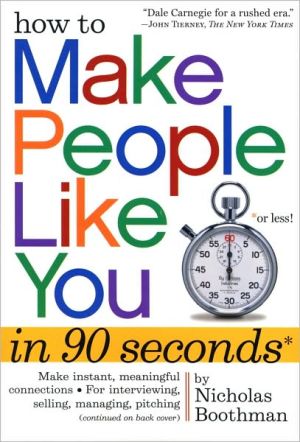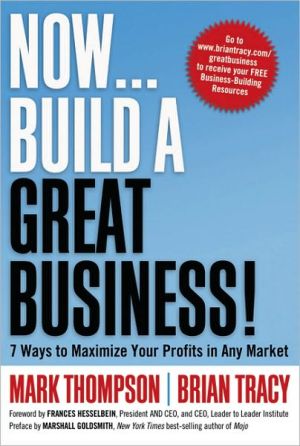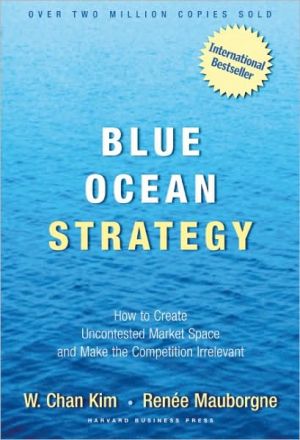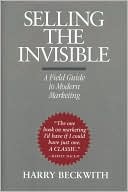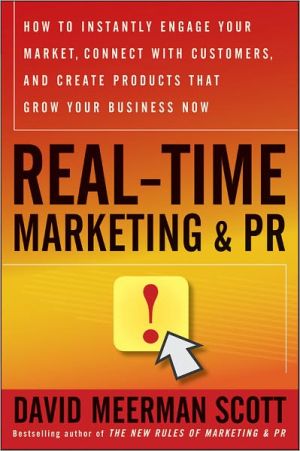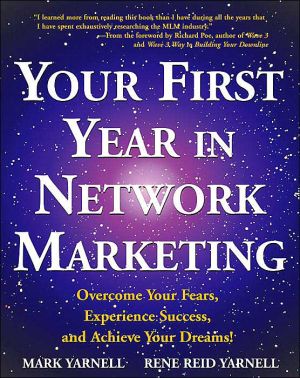How to Make People Like You in 90 Seconds or Less
\ About the Author:\ Nicholas Boothman learned how to establish instant rapport with strangers while working as a fashion and advertising photographer. A licensed Master Practitioner of Neuro-Linguistic Programming, he is a consultant to individuals, groups, and corporations
Search in google:
Yes, it really works: Nicholas Boothman's breakthrough program of "rapport by design" really does show you how to make people like you in 90 seconds or less. Now it's available in paperback, with a newly created workbook section based on the author's hundreds of workshops.Whether selling, managing, applying to college, looking for a job—or looking for a soulmate—the secret of success is connecting with other people. Nicholas Boothman shows exactly how to make the best out of any relationship's most critical moment—those first 90 seconds that make up a first impression. Armed with his program, readers learn how to establish immediate trust by synchronizing voice tone and body language; the power of a Really Useful Attitude; and how to get people talking and keep them talking. He discusses eye cues, the magic of opposites attracting, and sensory preferences—some of us are Visual people, others are Kinesthetic (responding most to the sense of touch), and a few are Auditory. So when you say "I see what you mean" to a Visual, you’re really speaking his or her language. Publishers Weekly Blessed with an irresistible premise and title, this well-packaged self-help book draws its advice from neuro-linguistic programming and a study of interpersonal communication conducted by two UCLA doctors. While its clearly presented techniques may help readers clear communications hurdles in social and professional interactions, this upbeat volume will probably appeal most to readers interested in dating and nurturing romantic attachments. A former fashion photographer who gives "Positive Connection" seminars, Boothman breaks down the process of connecting with people into discrete steps--meeting, establishing rapport and opening up communication--and provides simple examples, self-assessments, exercises and sample dialogue. He contends that a key to establishing rapport lies in synchronizing behavior or mimicking the other person's pose, facial expression, gestures, body language and tone of voice. According to the principles of neuro-linguistic programming, Boothman recommends categorizing people according to how they take in information (e.g., visually, aurally or by feel) and responding in kind. Though the book reads like an adapted seminar or puffed-up magazine article, Workman's ambitious promotional campaign and usual canny marketing may well make this little book one of the season's most popular impulse purchases. 20-city author tour. (Oct.) Copyright 2000 Cahners Business Information.\|
Chapter 2 First Impressions\ \ For the purposes of this book, there are three parts to connecting with other people: meeting, rapport and communicating. These three parts happen quickly and tend to overlap and blend into each other. Our goal is to make them as natural, fluid and easy as possible, and above all to make them enjoyable and rewarding.\ \ Obviously, you begin the connecting process by meeting people. Sometimes you meet someone by chance-the woman on the train who turns out to share your passion for Bogart movies. And sometimes it's by choice-the man your cousin introduced you to because he loves Shakespeare, fine wines and bungee jumping, just like you. \ \ If meeting is the physical coming together of two or more people, then communicating is what we do from the moment we are fully aware of another's presence. And between these two events-meeting and communicating-lies the 90-second land of rapport that links them together.\ \ The Meeting\ If you make the right impression during the the first three or four seconds of a new meeting, you create an awareness that you are sincere, safe and trustworthy and the opportunity to go further and create rapport will present itself. \ \ \ The Greeting\ We call the first few seconds of contact the "greeting." Greetings are broken into five parts: Open-Eye-Beam-Hi-Lean. These five actions comprise a welcoming program to carry out when meeting anyone for the first time.\ \ Open. The first part of the greeting is to open your attitude and your body. For this to work successfully, you must have already decided on a positive attitude that's right for you. This is the time to really feel and be aware of it. \ \ Check to see that your body language is open. If you have the right attitude, this open body language will take care of itself. Keep your heart aimed directly at the person you're meeting. Don't cover your heart with your hands or arms and, when possible, unbutton your jacket or coat.\ \ Eye. The second part of the greeting involves your eyes. Be first with eye contact. Look this new person directly in the eye. Let your eyes reflect your positive attitude. To state the obvious: eye contact is real contact! \ \ Beam. This part is closely related to eye contact. Beam! Be the first to smile. Let your smile reflect your attitude.\ \ Now you've gained another person's attention, through your open body language, your eye contact and your beaming smile. What that person is picking up subconsciously is not some grinning, gawking fool (though you may briefly fear you look like one!) but someone who is completely sincere.\ \ Hi! Whether it's "Hi!" or "Hello!" or even "Yo!" say it with pleasing tonality and add your own name ("Hi! I'm Naomi."). As with the smile and the eye contact, be the first to say your name. It is at this point, and in only a few moments, that you can gather tons of free information about the person you're meeting-information you can use later in conversation. \ \ Take the lead. Put your hand out and if it's convenient find a way to say his or her name two or three times to help fix it in memory. Not "Glenda, Glenda, Glenda, nice to meet you" but "Glenda. Great to meet you, Glenda!" As you'll see later, this is followed by your "occasion/location statement." \ \ Lean. The final part of introducing yourself is the "lean." Your action can be an almost imperceptible forward tilt to very subtly indicate your interest and openness as you begin to "synchronize" the person you've just met.\ \ \ The Handshake.\ Handshakes run the gamut from the strong, sturdy bone crusher to the wet noodle. Both are memorable-once shaken, twice shy, in some cases. \ \ Certain expectations accompany a handshake. It should be firm and respectful, as it you were ringing a hand bell for room service. Deviate from these expectations and the other person will scramble to make sense of what's happening. Something is wrong-like hot water coming out of the cold tap. The brain hates confusion, and when faced with it the first instinct is to withdraw. \ \ The "Hands-free" handshake, is a handshake without the hand, and it is powerful. Just do everything you would do during a normal handshake but without using your hand. Point your heart at the other person and say hello. Light up your eyes and smile, and give off that same special energy that usually accompanies the full-blown shake. Incidentally, this works wonders in presentations when you want rapport with a group or audience.\ \ \ Establishing Rapport\ Rapport is the establishment of common ground, of a comfort zone where two or more people can mentally join together. When you have rapport, each of you brings something to the interaction-attentiveness, warmth, a sense of humor, for example-and each brings something back: empathy, sympathy, maybe a couple of great jokes. Rapport is the lubricant that allows social exchanges to flow smoothly. \ \ The prize, when you achieve rapport, is the other person's positive acceptance. This response won't be in so many words, but it will signal to you something like this: "I know I just met you. I like you and you're doing okay, so I will trust you with my attention." Sometimes rapport just happens all by itself, as if by chance; sometimes you have to give it a hand. Get it right, and the communicating can begin. Get it wrong, and you'll have to bargain for attention.\ \ As you meet and greet new people, your ability to establish rapport quickly and sincerely will depend on four things: your attitude, your ability to synchronize certain aspects of your behavior like body language and voice tone with the other person, your conversation skills and your ability to discover which sense (visual, auditory, kinesthetic) each person relies on most. Once you become adept in these four areas, you will be able to quickly connect and establish rapport with anyone you choose and at any time. As you become very proactive toward people, they will like you in return and will want to get to know you better. You will be your natural self and easily give and receive cooperation.\ \ As you read on, you'll discover that it's possible to speed up the process of feeling comfortable with a stranger by quantum-leaping the usual familiarization rituals and going straight into the routines that people who like each other do naturally. In virtually no time at all, you will be getting along as if you've known each other for ages. Many of my students report that when achieving rapport becomes second nature, they frequently find people asking, "Are you sure we haven't met before?" I know the feeling; it happens to me all the time. And it's not just other people asking me the question. I am convinced that half the people I meet, I have met before-that's just the way it goes when you move effortlessly into another person's map of the world. It's a wonderful feeling. \ \ Communicating\ In my experience, almost everyone has a slightly different sense of the word "communication," but their definitions usually go something like this: "It's \ an exchange of information between two or more people" . . . "It's getting your message across" . . . "It's being understood, or understanding each other."\ \ In the early days of Neuro-Linguistic Programming (NLP), a research project devoted to "the study of excellence and a model of how individuals structure their subjective sensory experience," Richard Bandler and John Grinder created an effective definition for the meaning of communication. They agreed: "The meaning of communication lies in the response it gets." This is simple, and brilliant, because it means that it's 100% up to you whether your own communication succeeds or fails; (although, as you'll see later, "there is no failure only feedback"). After all, you are the one with a message to deliver or a goal to achieve, and you are the one with the responsibility to make it happen. What's more, if it doesn't work, you are the one with the flexibility to change what you do until you finally get what you want. In order to give some form and function to our communication here, let's assume that we have some kind of response or outcome in mind. People who are low on communication skills usually have not thought out the response they want from the other person in the first place and therefore cannot aim for it. The techniques and skills you will learn from this book will serve you on all levels of communication from social dealings like developing new relationships, passing along information and being understood in your general daily conveniences all the way to life changing moves for yourself and those in your sphere of influence.\ \ The formula for effective communication has three parts: \ \ Know what you want: Formulate your intention in the affirmative and preferably in the present tense. For example, "I want a successful relationship, and I have filled my imagination with what it will look, sound, feel, smell and taste like with me in it, and I know when I will have it" is an affirmative statement, as opposed to "I don't want to be lonely."\ \ Find out what you're getting. Get feedback: "I tried hanging out in smoky bars. It doesn't do it for me." \ \ Change what you do until you get what you want. Design a plan and follow through with it: "I'll invite 10 people over for dinner every Saturday night." Do it and get more feedback. Redesign if necessary, and do it again with more feedback. Repeat the pattern redesign-do-get feedback-until you get what you want. You can apply this pattern to any area of your life that you want to improve-finance, romance, sports, career, you name it.\ \ Know what you want.\ \ Find out what you're getting.\ \ Change what you do until you get what you want.\ \ This is terrifically easy to remember because a certain Colonel had the good sense to open a chain of restaurants using the abbreviation KFC for a name. Every time we see one of his signs, we can ask ourselves how well the development of our communication skills is going.\ \ An Exercise in Greeting: Firing Energy\ This is on one of the most powerful exercises we do in our seminars, but even without supervision you can turn it into a force to be reckoned with! \ \ You'll need a partner to work with. Stand about eight feet apart, facing each other like two gunfighters in a cowboy movie. As you say "Hi!" clap your hands together and slide your right hand off and past the other in the direction of the other person. Gather up all the energy you can throughout your body and store it in your heart, then clap the energy on through your right hand (the one we use in a handshake) straight into the other person's heart. This is a long explanation for something that takes no more than two seconds, but with all six channels-body, heart, eyes, smile, clap and voice/breath fired at the person in a rapid flash-there is a vast transfer of energy.\ \ Immediately after receiving the energy, your partner should fire it back at you in the same way. Taking turns, continue fast and focused. Be sure to make contact with all six channels at once. Practice on each other for two minutes. \ \ Now the real fun begins. You're going to start firing \ different qualities of energy: logic/head energy, communication/throat energy, love/heart energy, power/solar plexus energy and sexual energy. You've already fired ' love/heart energy. Now do the same, head to head, instead of heart to heart. Keep firing head/logic energy at each other until you both agree you can feel and differentiate the two types of energy. After two or three minutes back and forth, try the other regions: throat to throat, solar plexus to solar plexus etc.\ \ It gets even better. Figure out which kind of energy you want to send, but don't say what it is. Now greet your partner, shake hands, say "Hi" and fire! Your partner must identify the kind of energy he or she is getting. Take turns. Practice and practice until your body language becomes subtle and almost imperceptible. \ \ Next, go out and try it on the people you meet. Fire energy when you say "Hi" to someone in a supermarket, to your waiter in the café, to your brother-in-law or the \ guy who fixes the photocopier in your office. They will notice something special about you-some might call it "star quality."\ \ Excerpted from How to Make People Like You in 90 Seconds or Less. Copyright (c) 2000 by Nicholas Boothman. All rights reserved.\
Preface xvFirst Contact 1People Power 3The Benefits of Connecting 4Face to Face 8Why Likability Works 9Why 90 Seconds? 10First Impressions 13The Meeting 14An Exercise in Greeting: Firing Energy 17Establishing Rapport 19Communicating 20What's Coming Up 23The 90-Second Land of Rapport 25"There's Something About This Person I Really Like!" 27Natural Rapport 29Rapport by Chance 30Rapport by Design 31Common Ground 32Attitude Is Everything 35A Really Useful Attitude 36A Really Useless Attitude 37It's Your Choice 39An Exercise in Attitude: Triggering Happy Memories 42Actions Do Speak Louder Than Words 47Body Language 47Flirting 54Congruity 55Mixed Messages 56An Exercise in Congruity: Words vs. Tone 59Being Yourself 62People Like People Like Themselves 65Natural Synchrony 66The Art of Synchronizing 69The Bully 74Doing What Comes Naturally 78An Exercise in Synchrony: In and Out of Sync 82The Secrets of Communication 87It's Not All Talk-It's Listening, Too 89Stop Talking and Start Asking! 90Missed Cues 100Active Listening 103Give-and-Take 105Talking in Color 106An Exercise in Tonality: Sound Effects 108Lasting Impressions 112Making Sense of Our Senses 115Visual, Auditory or Kinesthetic? 117A Self-Test: What's Your Favorite Sense? 120Tuning In to Sensory Preferences 124Metaphorically Speaking 125Sights and Sounds 128Spotting Sensory Preferences 131Sensory Preference Profiles 132TV Giveaways 134Pushing for More 137Verbal Cues 139Eye Cues 146An Exercise in Spotting Preferences: Brain Lock 149An Exercise in Eye Cues: The Eyes Have It 151Ingrid's Hard-Earned Vacation 152The Big Picture 153Putting It All Together 161Where Do I Start? 164Assuming Rapport 168A Modern-Day Parable 170The Small Things That Make a Big Difference Workbook 173About the Author 203
\ From Barnes & NobleNicholas Boothman is a Neuro-Linguistic Programming master who claims that he can teach you to win over strangers within a minute and a half. To effect this miracle, he contends, one must learn how to synchronize attitude, body language, and voice tone and attune them to the other person. Is it simple? No, but, with Boothman's memorable examples, it is possible; and in face-to-face communication, that makes all the difference in the world.\ \ \ \ \ The New York Times“Dale Carnegie for a rushed era.” –John Tierney, The New York Times\ \ \ The Economist“Nick Boothman is truly inspirational.” –Matthew Bishop, The Economist\ \ \ \ \ Bottom Line/Personal“Nick Boothman’s brilliant stroke is to guarantee that within the first 90 seconds of meeting someone you’ll be communicating like old, trusted friends.” –Marty Edelston, Publisher, Bottom Line/Personal\ \ \ \ \ Bottom Line Publications Editors“Nick Boothman’s brilliant stroke is to guarantee that within the first 90 seconds of meeting someone you’ll be communicating like old, trusted friends.” –Marty Edelston, Publisher, Bottom Line/Personal\ \ \ \ \ Publishers WeeklyBlessed with an irresistible premise and title, this well-packaged self-help book draws its advice from neuro-linguistic programming and a study of interpersonal communication conducted by two UCLA doctors. While its clearly presented techniques may help readers clear communications hurdles in social and professional interactions, this upbeat volume will probably appeal most to readers interested in dating and nurturing romantic attachments. A former fashion photographer who gives "Positive Connection" seminars, Boothman breaks down the process of connecting with people into discrete steps--meeting, establishing rapport and opening up communication--and provides simple examples, self-assessments, exercises and sample dialogue. He contends that a key to establishing rapport lies in synchronizing behavior or mimicking the other person's pose, facial expression, gestures, body language and tone of voice. According to the principles of neuro-linguistic programming, Boothman recommends categorizing people according to how they take in information (e.g., visually, aurally or by feel) and responding in kind. Though the book reads like an adapted seminar or puffed-up magazine article, Workman's ambitious promotional campaign and usual canny marketing may well make this little book one of the season's most popular impulse purchases. 20-city author tour. (Oct.) Copyright 2000 Cahners Business Information.\|\ \
